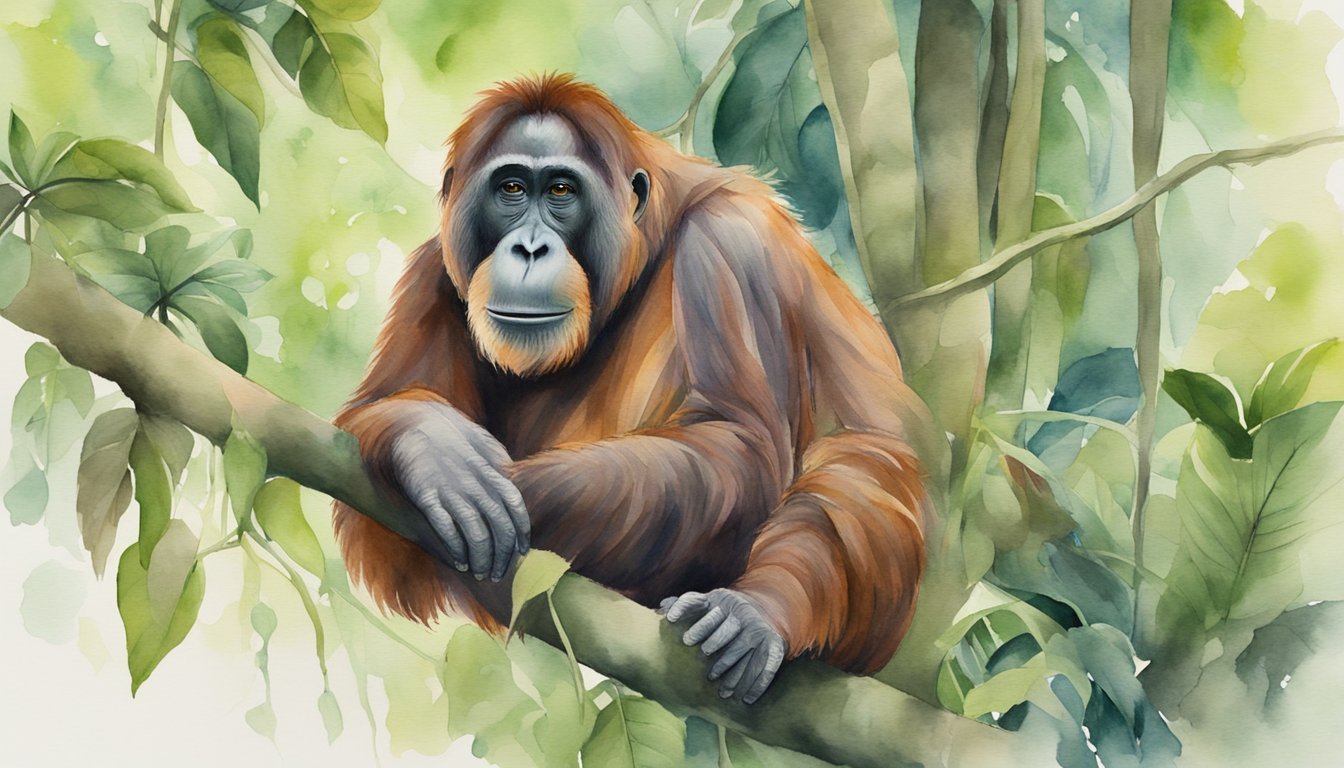Orangutan Overview

Orangutans are one of the most iconic species of great apes, primarily known for their distinctive red fur and remarkable intelligence. These primates are closely related to humans and are often referred to as the “person of the forest” in Malay due to their expressive faces and behaviors.
Species Classification
The orangutan genus, Pongo, comprises three species: the Bornean orangutan (Pongo pygmaeus), the Sumatran orangutan (Pongo abelii), and the Tapanuli orangutan (Pongo tapanuliensis), which was only identified as a distinct species in 2017. Each species has adaptations unique to the island they inhabit, with some varying physical and behavioral characteristics.
Habitat and Distribution
Orangutans are native to Southeast Asia, specifically the tropical rainforests of Borneo and Sumatra. The Bornean orangutan is found predominantly in Borneo, which is politically divided among Indonesia, Malaysia, and Brunei, while the Sumatran and the critically endangered Tapanuli orangutan are limited to the northern region of Sumatra in Indonesia.
Physical Characteristics
Orangutans are notable for their unique morphology, which includes long arms that can span up to 2 meters, aiding in their arboreal lifestyle. Males possess distinctive cheek pads known as flanges and are significantly larger than females, occasionally weighing more than 130 kilograms (285 pounds). Orangutans exhibit sexual dimorphism, with males typically reaching 1.3 meters in height.
Conservation Status
Orangutans face critical threats from habitat destruction, primarily due to logging, deforestation for palm oil production, and mining. Illegal hunting and the pet trade add to their plight. The Bornean orangutan is classified as Endangered, while both the Sumatran and the Tapanuli orangutan are considered Critically Endangered, with their numbers decreasing alarmingly due to ongoing environmental pressures.
Orangutan Life and Behavior
Orangutans are highly intelligent primates known for their distinctive arboreal lifestyle, complex behaviors, and long life span. Each aspect of their life from their diet to social interactions plays a crucial role in their survival, and learning more about their habits helps conservation efforts to protect these magnificent creatures.
Diet and Nutrition
Orangutans primarily feast on a variety of fruits such as figs, lychees, and mangosteens. They also consume leaves, bark, insects, and other vegetation. The abundance of fruit within their habitat dictates much of an orangutan’s life, including their movements and social interactions.
Social Structure
Despite being largely solitary animals, orangutans establish complex social bonds. Adult males usually live alone, while adult females are often seen with their young. Social interactions occur mainly during mating or on the rare occasion when food is abundant. Adult males will emit long calls to communicate their presence and attract potential mates.
Reproductive Life
Females reach reproductive age between 10-15 years, and they give birth to one young after about a gestation of eight months. Mothers share a strong bond with their offspring, caring for them for up to eight years. This allows the young orangutans to learn the necessary skills for survival.
Threats and Preservation Efforts
The biggest threats to orangutans are deforestation, habitat destruction due to palm oil cultivation, illegal pet trade, and hunting. Conservation programs highlight the importance of preservation efforts, such as creating protected areas and promoting sustainable practices to ensure the survival of orangutans in the wild.

